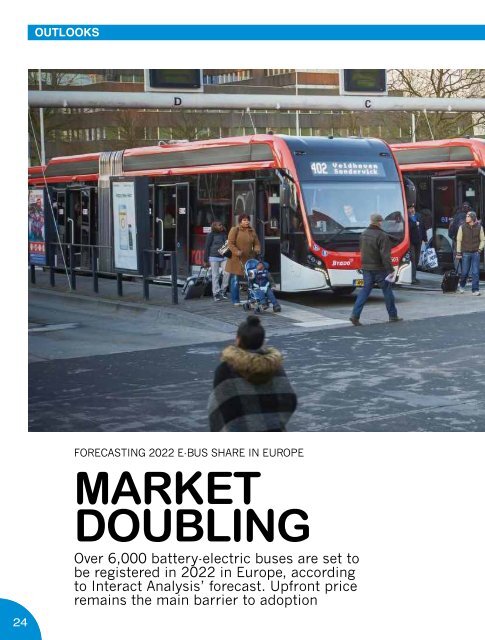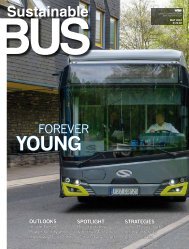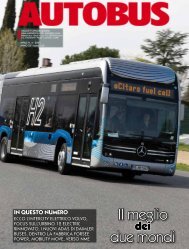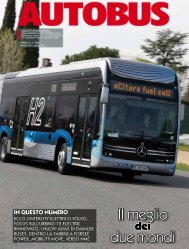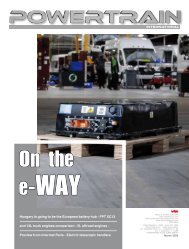You also want an ePaper? Increase the reach of your titles
YUMPU automatically turns print PDFs into web optimized ePapers that Google loves.
OUTLOOKS<br />
Interact Analysis is a<br />
market research firm with<br />
a specific department for<br />
truck, bus and off-highway<br />
electrification. Here on<br />
Sustainable Bus Magazine<br />
we host a contribution<br />
from the research analyst<br />
Jamie Fox.<br />
FORECASTING <strong>2022</strong> E-<strong>BUS</strong> SHARE IN EUROPE<br />
MARKET<br />
DOUBLING<br />
Over 6,000 battery-electric buses are set to<br />
be registered in <strong>2022</strong> in Europe, according<br />
to Interact Analysis’ forecast. Upfront price<br />
remains the main barrier to adoption<br />
In 2021, we estimate that 3,471 urban<br />
BEV buses were registered in Europe,<br />
22% of the total of 15,923 buses. That’s<br />
far behind China but far ahead of most<br />
of the rest of the world. According to our<br />
country level database from our report on<br />
Hybrid and Electric Trucks and Buses the<br />
UK and the Scandinavian countries were<br />
well ahead of that 22% figure, while much<br />
of the rest of Europe was behind. The leaders<br />
in BEV sales in 2021 were Germany<br />
with 575 BEV buses, the UK with 550 and<br />
France with 512.<br />
The Netherlands has already moved to close<br />
to 100% electric buses as well, but its lower<br />
total bus market means that, even so, its<br />
BEV shipments are still far behind those of<br />
France and Germany.<br />
<strong>2022</strong> was already expected to be a strong<br />
year for electric buses, but the effects of<br />
the Russian invasion of Ukraine have given<br />
the market a boost as countries in Europe<br />
seek energy independence in addition<br />
to existing goals around air pollution and<br />
climate change.<br />
E-bus market to grow 100% in ‘22<br />
We currently project 6,155 BEV buses<br />
in Europe in <strong>2022</strong>, or 39.5% of a total of<br />
15,591. This assumes a significant number<br />
of orders in the second half of the year (considering<br />
that the registrations from January<br />
to June were 1,768, see page 6) and assumes<br />
that there will not be a (major) recession in<br />
the second half of the year.<br />
The above numbers do not include fuel cell<br />
vehicles, which are currently about 1% of<br />
the total and growing. They also don’t include<br />
intercity buses, where BEV has a<br />
much smaller penetration.<br />
The majority of buses will still be fossil fuels<br />
in <strong>2022</strong> for various reasons. One is available<br />
supply: the production of electric vehicles<br />
cannot be tripled overnight. Battery gigafactories<br />
do not go from design to mass production<br />
in a matter of months, either. Companies<br />
are clearly planning for big increases but this<br />
will play out steadily over the next 3-4 years.<br />
Supply chains in <strong>2022</strong> have been difficult,<br />
slowing down production. A second reason<br />
is that the dependency on Russian fossil<br />
fuel is, especially for some countries such<br />
as Germany, more a dependency on gas<br />
than oil. While less diesel buses reduces de-<br />
24<br />
25


